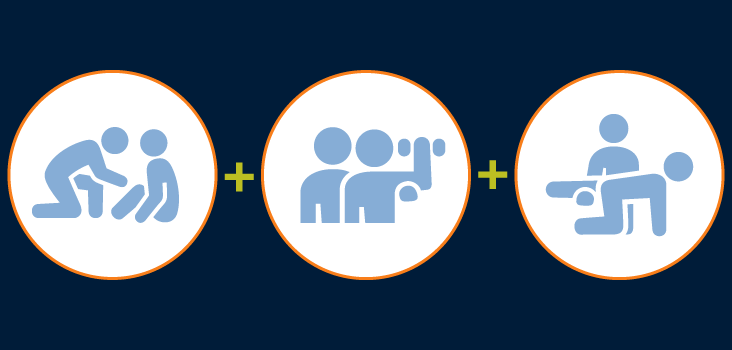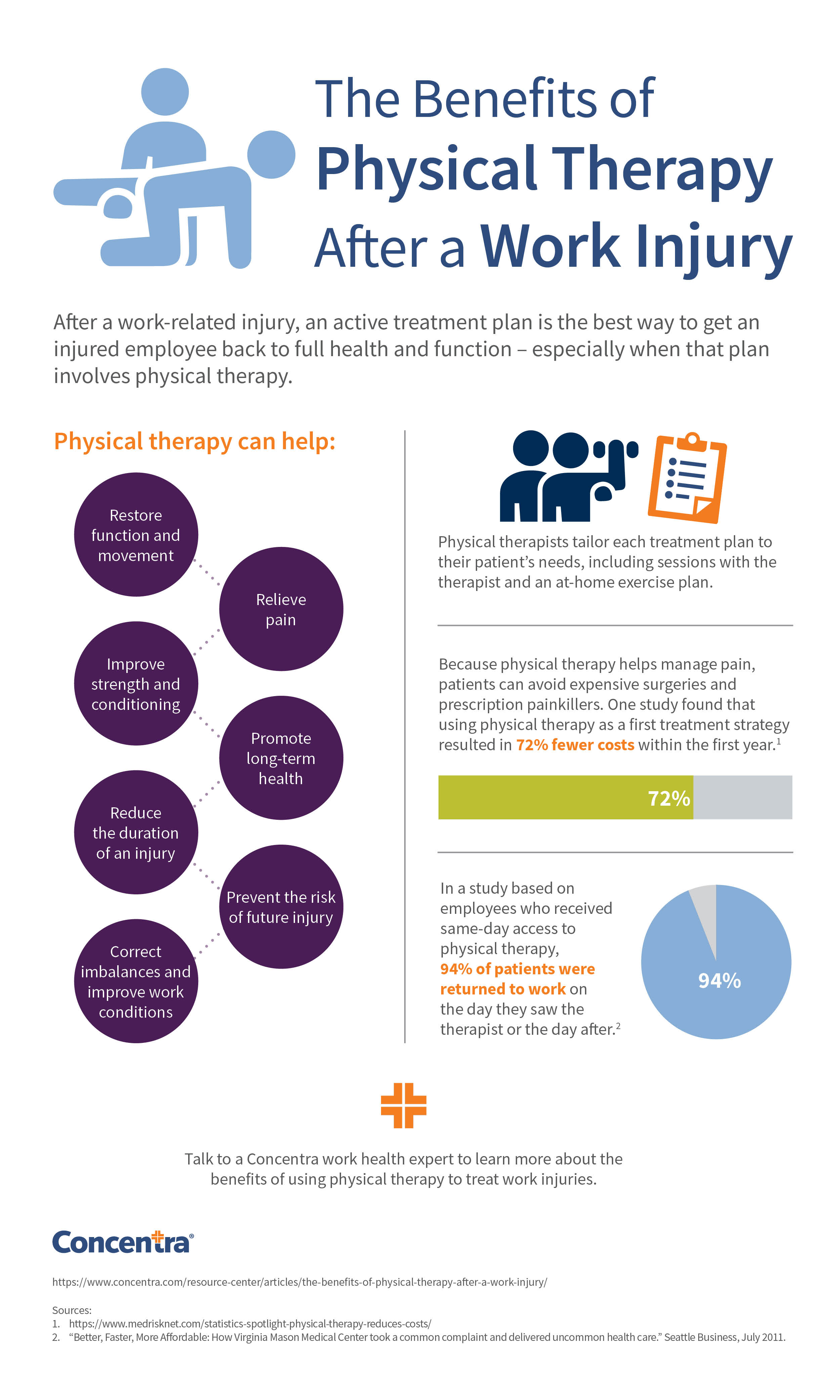Overview
A four-part graphic titled, “The Benefits of Physical Therapy After a Work Injury,” with the sub-headline, “After a work-related injury, an active treatment plan is the best way to get an injured employee back to full health and function – especially when that plan involves physical therapy.
Details/values
The first of four boxes begins with the headline, “Physical therapy can help:” and gives seven examples of ways physical therapy can help after a work injury, including:
- Restore function and movement
- Relieve pain
- Improve strength and conditioning
- Promote long-term health
- Reduce the duration of an injury
- Prevent the risk of future injury
- Correct imbalances and improve work conditions
The second of four boxes displays icons of a physical therapy patient with a provider and a clipboard, followed by the statement:
- Physical therapists tailor each treatment plan to their patient’s needs, including sessions with the therapist and an at-home exercise plan.
The third of four boxes begins with the statement:
- Because physical therapy helps manage pain, patients can avoid expensive surgeries and prescription painkillers. One study found that using physical therapy as a first treatment strategy resulted in 72% fewer costs within the first year.
A horizontal bar below the statement illustrates 72% filled in green, while the remainder is gray.
The final box displays the statement:
- In a study based on employees who received same-day access to physical therapy, 94% of patients were returned to work on the day they saw the therapist or the day after.
Beside the statement is a pie chart illustrating 94% filled in blue, while the remainder is gray.
Presentation
The graphic is divided into two vertical columns. The left column is considered box one in the content above and uses a vertical series of connecting purple circles, each of which holds one example of how physical therapy can help. The right column is divided into three separate sections (boxes two, three, and four) using horizontal lines. Bolded phrases are shown in orange, while the remainder of the text is black.





